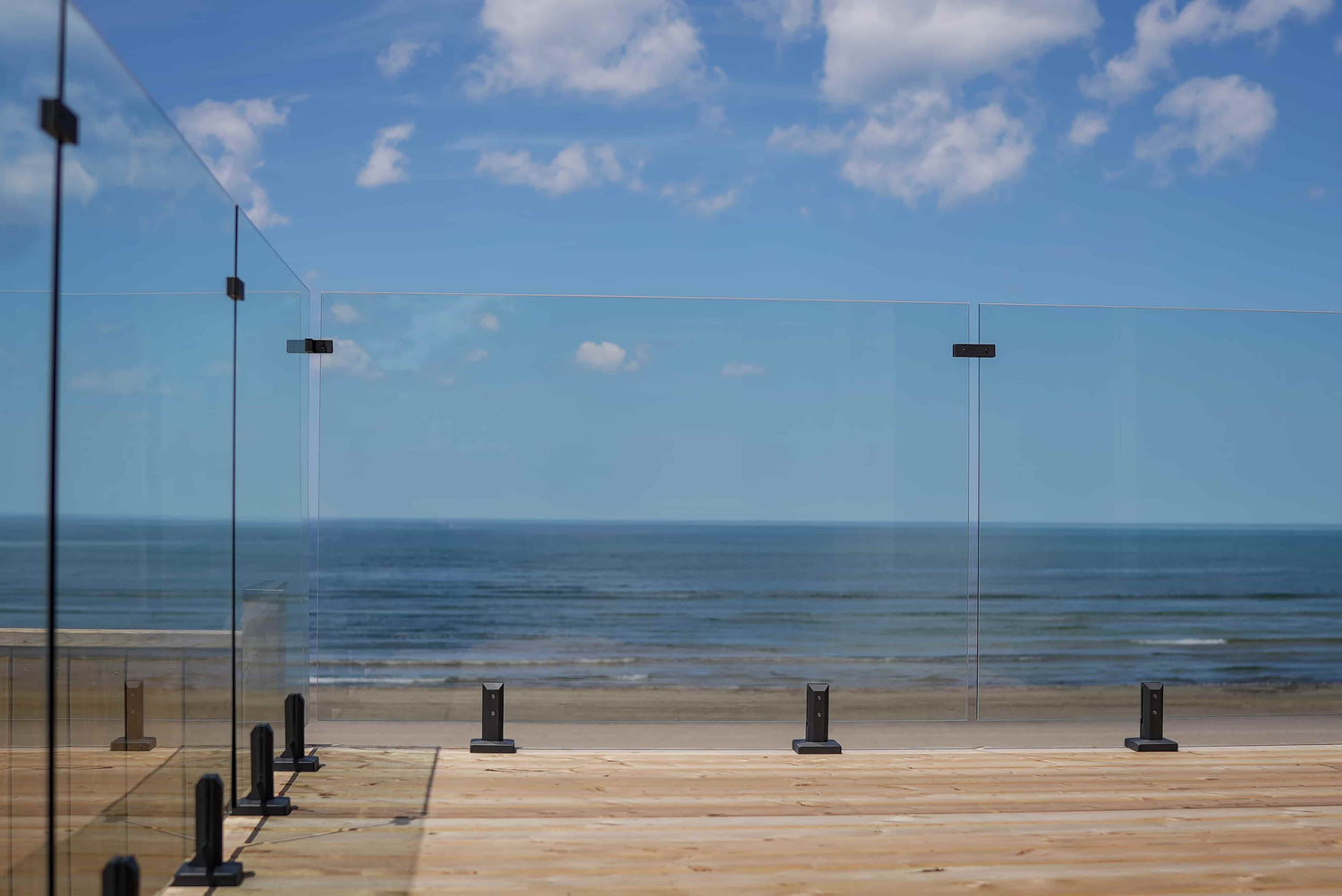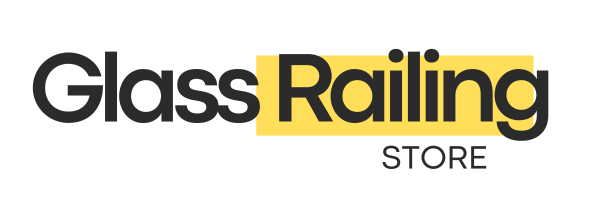Utah Building Code for Glass Railings

From the towering peaks of Kings Peak at 13,528 feet to the stark beauty of the Bonneville Salt Flats at 4,200 feet above sea level, Utah's dramatic elevation changes create unique challenges for glass railing installations. The Beehive State's diverse geography spans three distinct regions - the Rocky Mountains with their world-renowned powder snow, the Great Basin's expansive deserts, and the Colorado Plateau's red rock canyons - each demanding specialized attention to building code compliance.
Utah operates under a unified statewide building code system through House Bill 532, adopting the 2021 International Building Code (IBC) for commercial structures and the 2021 International Residential Code (IRC) for residential buildings, effective July 1, 2023. This creates a comprehensive regulatory framework where glass railing installations must meet current safety standards across Utah's varied terrain, from Wasatch Front urban areas to remote mountain communities.
Understanding Utah's Building Code Framework
Utah's building code system reflects the state's commitment to unified safety standards through Utah Code Title 15A, the State Construction and Fire Codes Act. The statewide adoption of 2021 IBC and IRC through House Bill 532 ensures consistent requirements across all jurisdictions, eliminating the patchwork system many states experience.
The Utah Division of Occupational and Professional Licensing oversees construction-related professions while local jurisdictions maintain permitting and inspection authority. Major cities like Salt Lake City, Provo, and Park City follow the state-adopted codes with minimal local amendments, creating regulatory consistency throughout Utah's diverse geographic regions.
This unified approach benefits glass railing installers by providing clear, consistent standards whether projects are located in the Wasatch Front's urban corridor or remote areas of the Great Basin. The statewide system ensures equal safety protection for residents across Utah's varied elevation zones and climate conditions.
Glass Railing Safety Requirements and Standards
Utah's glass railing safety requirements center on IBC Section 2407 for commercial applications and IRC provisions for residential installations. All glass railings must utilize safety glazing meeting either Category I (16 CFR 1201) or Class A (ANSI Z97.1) standards.
Structural load requirements demand glass railings withstand a 200-pound concentrated load applied at any point and direction, plus a 50-pound per linear foot uniform load applied horizontally along the top rail. These requirements apply regardless of elevation, ensuring consistent safety standards from Park City's mountain resorts to St. George's desert communities.

ASTM E2353 test methods provide the framework for determining static strength, impact performance, and post-breakage characteristics of railing systems. Glass components must incorporate a 4x safety factor, meaning allowable stresses equal one-fourth of the material's ultimate strength.
Modern glass railing systems utilize laminated glass construction with polyvinyl butyral (PVB) or ethylene vinyl acetate (EVA) interlayers. These materials provide superior post-breakage performance compared to tempered glass alone, particularly important given Utah's temperature extremes ranging from alpine conditions to desert heat.
Height and Dimensional Requirements
Utah's building codes establish clear height requirements that vary between residential and commercial applications. Commercial buildings require minimum 42-inch guard heights above adjacent walking surfaces, while residential applications under the International Residential Code allow 36-inch heights for individual dwelling units.
Any walking surface more than 30 inches above grade requires guards, including balconies, decks, stairs, and raised patios. Opening restrictions mandate that no opening allow passage of a 4-inch diameter sphere, particularly critical between 2 inches and the guard height to prevent small children from falling through deck railing systems.
|
Application Type |
Minimum Height |
Load Requirements |
Glass Type |
Top Rail Rule |
|
Residential (IRC) |
36 inches |
50 lbs./linear foot + 200 lbs. point |
Tempered or laminated |
Required unless laminated |
|
Commercial (IBC) |
42 inches |
Same as residential |
Laminated or tempered |
Usually required |
|
Stairs |
34 inches minimum |
Same as above |
Safety glazing required |
Handrails 34"-38" |
Top rail requirements present important design considerations. Structural glass balusters must include attached top rails unless laminated glass systems are designed to remain intact after breakage through multi-ply laminated panels that pass ASTM E2353 testing.
Permitting and Inspection Process
Utah's unified code system creates streamlined permitting requirements across jurisdictions. Most municipalities require permits for new glass railing installations or significant alterations, with Salt Lake City Building Services providing typical examples of documentation requirements.
Required documentation includes:
- Complete building permit applications with project details
- Detailed construction plans showing glass railing specifications
- Glass specifications with safety standard certifications
- Anchoring methods and structural calculations
- Code citations demonstrating compliance
Cities like Salt Lake City, Provo, and Ogden review these documents and may request stamped engineering drawings for custom installations or top-rail-free systems. Inspection procedures follow established protocols covering height verification, spacing compliance, material markings, and anchorage quality.
The unified statewide code adoption simplifies the inspection process by ensuring consistent standards across Utah's diverse communities, from Wasatch Front metropolitan areas to rural mountain towns.
Material Specifications and Testing
Utah's extreme elevation and climate variations demand careful attention to glass railing material specifications. Temperature ranges from alpine conditions in the Uinta Mountains to desert heat in southern Utah create diverse performance requirements for glass systems.
Minimum glass thickness typically requires 3/8-inch or 1/2-inch for residential systems, with commercial applications potentially requiring thicker glass depending on specific applications. All glass must be fully tempered or laminated safety glass tested to meet current standards.
Testing requirements center on ASTM E2353 procedures covering static strength, impact resistance, and post-breakage characteristics. Professional glass railing systems often provide pre-tested components meeting ASTM requirements, simplifying compliance verification for Utah's diverse installation environments.
Permanent marking requirements mandate each glass panel include manufacturer identification, thickness, safety standard compliance, and certification markings. Commercial applications require mandatory markings, while residential projects highly recommend marked glass for easier inspections and traceability.
Installation Best Practices for Utah Climate
Utah's diverse geography requires specialized installation techniques accommodating elevation changes from 2,350 feet at Beaver Dam Wash to over 13,000 feet in the mountains. Installation practices must address varying wind loads, temperature extremes, and snow loading conditions.
Framing system requirements include deflection limits appropriate for Utah's varied conditions, with particular attention to thermal expansion considerations in desert regions and snow loading in mountain areas. Setting block requirements follow Glass Association of North America (GANA) guidelines for consistent performance across Utah's climate zones.
Weather sealing becomes critical given Utah's diverse conditions, from Great Basin desert winds to Wasatch Range mountain storms. Specialized glass railing suppliers understand these region-specific requirements and provide systems designed for Utah's unique geographic challenges.
Residential vs Commercial Requirements
Utah's unified code system creates clear distinctions between residential and commercial glass railing requirements. Residential applications under the IRC allow more flexible approaches for single-family homes, particularly in Utah's varied residential communities from valley floors to mountain slopes.
Commercial applications must meet stringent IBC requirements including 42-inch minimum guard heights and comprehensive accessibility compliance. Wind load considerations affect installations throughout Utah, with particular attention needed for exposed locations in the Great Basin and mountain regions.
When selecting glass railing components, consider both code requirements and Utah's specific environmental conditions, including elevation effects on wind loads and temperature variations across the state's diverse geography.

Recent Code Updates and Compliance
Utah's adoption of the 2021 IBC and IRC through House Bill 532 represents significant regulatory advancement, providing current safety standards throughout the state. The unified statewide approach eliminates confusion from varying local adoptions while ensuring consistent protection across Utah's diverse communities.
Professional development remains crucial for contractors working throughout Utah's varied terrain and elevation zones. Industry associations provide valuable resources for staying current with Utah's unified code requirements and understanding regional installation challenges.
Conclusion
Utah's glass railing building code requirements reflect the state's commitment to unified safety standards through statewide 2021 IBC and IRC adoption, while acknowledging the unique challenges posed by diverse elevation zones and geographic regions. From the Wasatch Front's urban corridor to remote areas of the Colorado Plateau, glass railings must meet consistent safety standards while withstanding Utah's varied environmental conditions.
Success factors include understanding Utah's unified code system, professional design and installation services familiar with elevation and climate variations, and comprehensive documentation demonstrating compliance with statewide standards. Property owners and contractors benefit from Utah's regulatory consistency while professional glass railing suppliers provide expertise in navigating the state's unique geographic challenges.
Frequently Asked Questions
1. Does Utah require building permits for glass railing installations?
Yes, most municipalities require permits for new railing installations or major structural changes. Utah's unified code system provides consistent permitting requirements statewide.
2. What type of glass must be used for railings in Utah?
All glass railings must use safety glazing meeting either Category I (16 CFR 1201) or Class A (ANSI Z97.1) standards. Both tempered and laminated glass are acceptable.
3. Can I use frameless glass without a top rail in Utah?
Only with laminated glass engineered to stay in place when broken. Some jurisdictions may still require top rails unless approved by a structural engineer with proper documentation.
4. Are there different requirements for mountain vs. desert installations?
While statewide codes apply uniformly, installers must consider elevation effects on wind loads, temperature variations, and snow loading when designing systems for Utah's diverse geography.
5. What load requirements must glass railings meet in Utah?
Glass railings must withstand 200-pound concentrated loads plus 50-pound per linear foot uniform loads, with a 4x safety factor for glass components regardless of elevation or location.
6. Do I need an engineer for custom glass railing designs?
Custom installations, particularly top-rail-free systems or installations in extreme conditions, typically require stamped engineering drawings demonstrating compliance with Utah's safety standards.
7. How does Utah's elevation affect glass railing requirements?
While basic code requirements remain consistent, elevation affects wind loads, temperature variations, and snow loading, requiring appropriate design considerations for different geographic regions.
8. What thickness of glass is required in Utah?
There's no universal thickness requirement, but most residential systems use 3/8-inch or 1/2-inch glass, with commercial systems potentially requiring thicker glass based on specific applications and conditions.
Let customers speak for us

Glass Railing Near You
Discover how The Glass Railing Store has been delivering exceptional service to our customers, thanks to our dedicated and knowledgeable team and their love our glass railing products.







